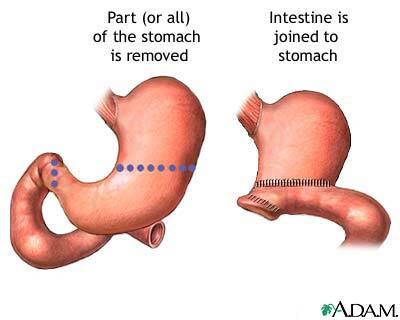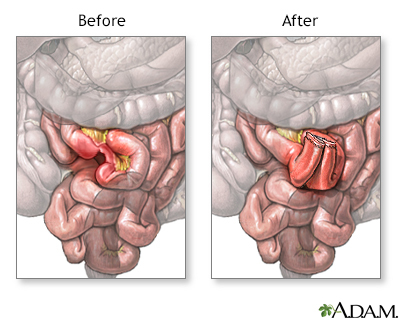Anastomosis
Definition
An anastomosis is a surgical connection between two structures. It usually means a connection that is created between tubular structures, such as blood vessels or loops of intestine.
For example, when part of an intestine is surgically removed, the two remaining ends are sewn or stapled together (anastomosed). The procedure is known as an intestinal anastomosis.
Information
Examples of surgical anastomoses are:
Gallery


References
Galandiuk S, Netz U, Morpurgo E, Tosato SM, Abu-Freha N, Ellis CT. Colon and rectum. In: Townsend CM Jr, Beauchamp RD, Evers BM, Mattox KL, eds. Sabiston Textbook of Surgery. 21st ed. Philadelphia, PA: Elsevier; 2022:chap 52.